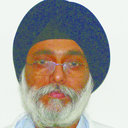The 2003 outbreak of Dengue fever in Delhi, India.
Palavras-chave
Resumo
Dengue fever (DF) and Dengue hemorrhagic fever (DHF) are widespread in Southeast Asia. An outbreak of DF/DHF in Delhi in 2003 started during September, reached its peak in October-November, and lasted until early December. This study describes the clinical and laboratory data of the 185 cases of DF/DHF admitted to Lok Nayak Hospital, New Delhi. The mean age of the patients was 26 +/- 10 years. Fever was present in all the cases with an average duration of fever being 4.5 +/- 1.2 days with headache (61.6%), backache, (57.8%), vomiting (50.8%) and abdominal pain (21%) being the other presenting complaints. Hemorrhagic manifestations in the form of a positive tourniquet test (21%), gum bleeding and epistaxis (40%), hematemesis (22%), skin rashes (20%) and melena (14%) were also observed. Hepatomegaly and splenomegaly were observed in 10% and 5% of cases, respectively. Laboratory investigations revealed thrombocytopenia (with a platelet count of < 100,000/microl) in about 61.39% of cases, Leukopenia (WBC <3,000/mm2) and hemoconcentration (Hct >20% of expected for age and sex) were found in 68% and 52% of the cases, respectively. The mortality rate was 2.7%. Despite widespread measures taken to control outbreaks of DF, it caused major outbreaks. More stringent measures in the form of vector control, improved sanitation and health education are needed to decrease morbidity, mortality and health care costs caused by a preventable disease.



